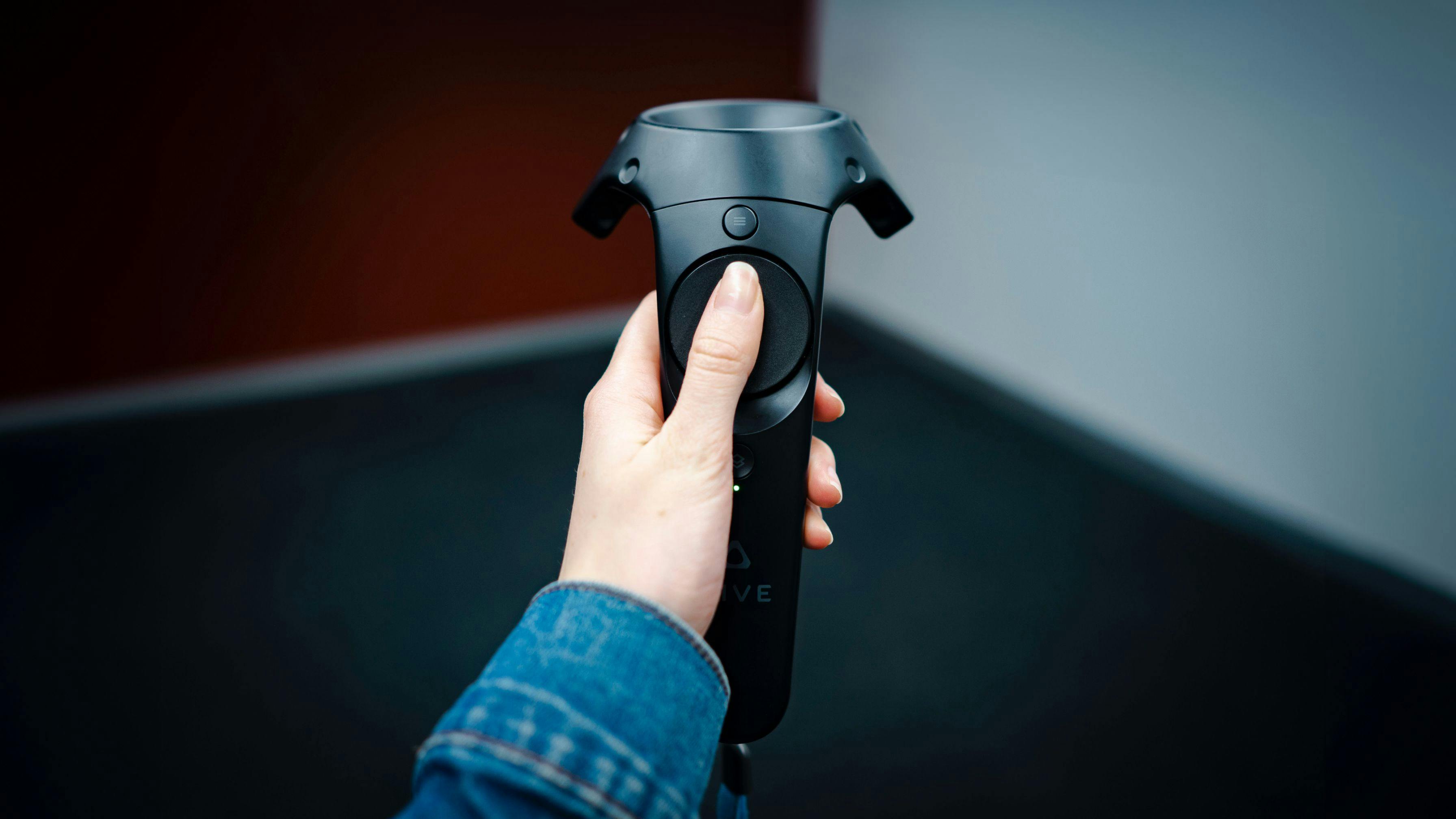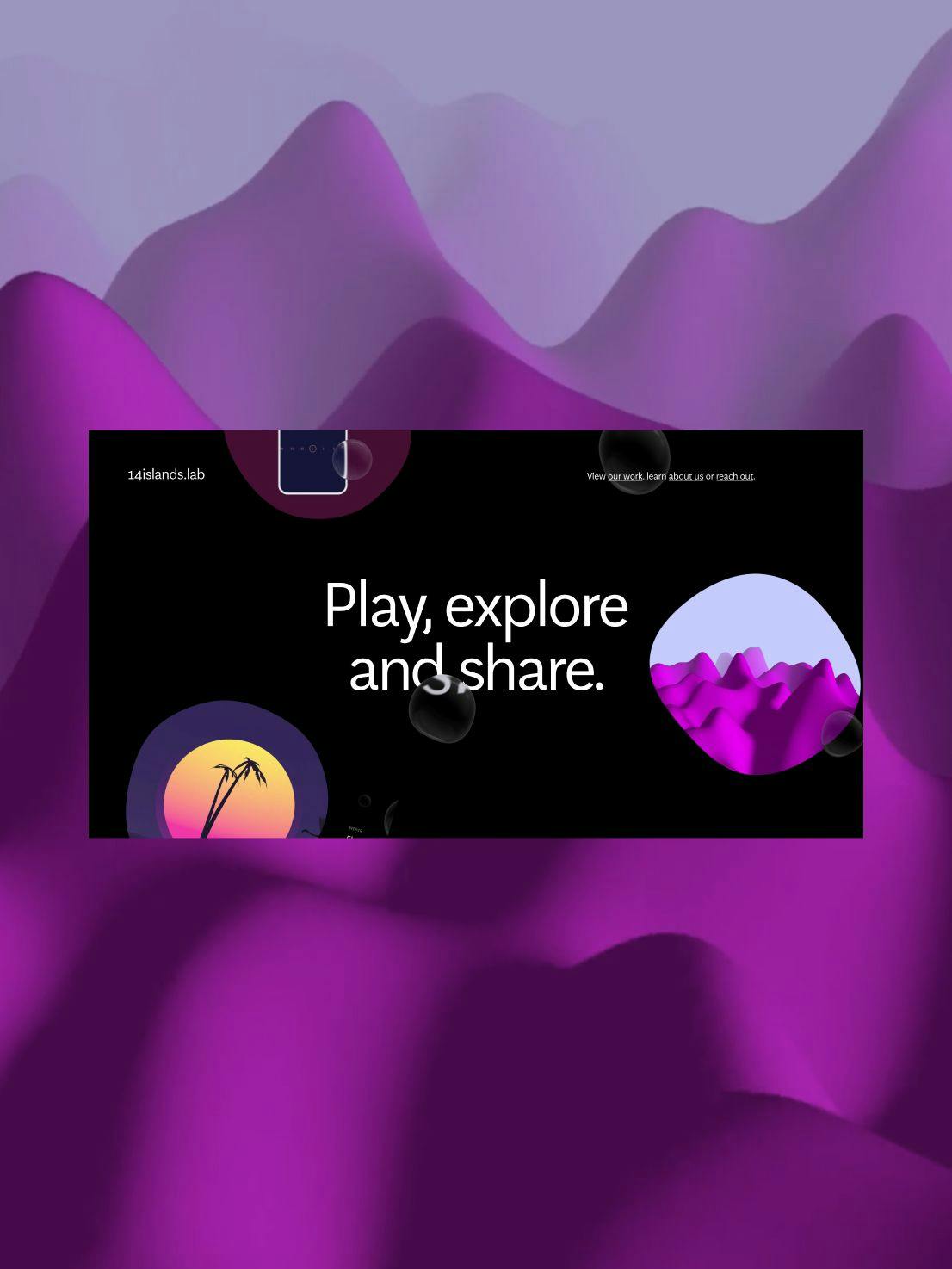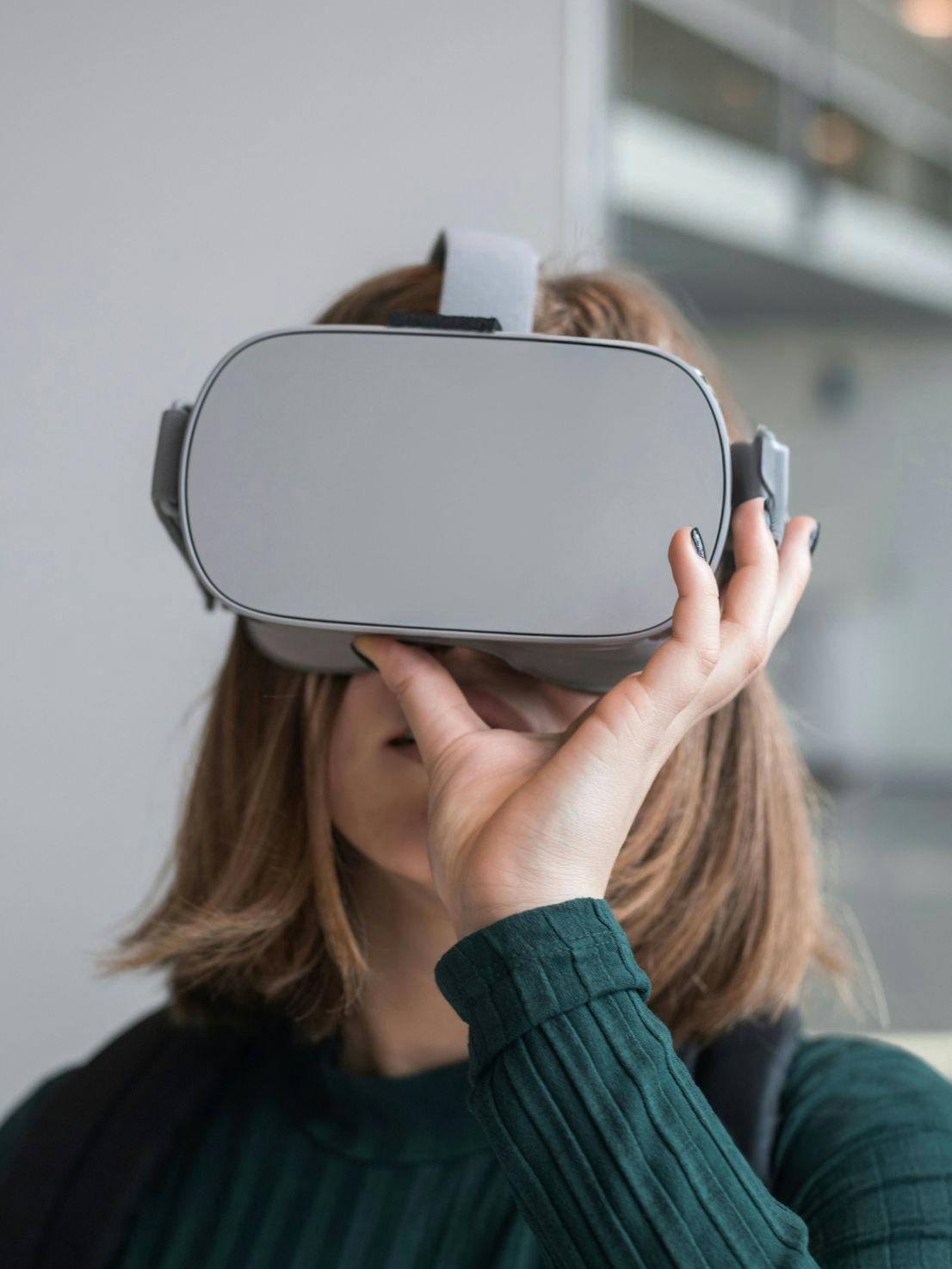This is about
Design
10 minutes
03 Mar 2023
This is about
Design
10 minutes
03 Mar 2023
Why designers should care more about gaming

At 14islands, we’ve recently worked on a few projects related to video games. Having played a bunch of games in the past, but less so recently, I felt intrigued about diving back into the topic with a fresh pair of eyes. After listening to an insightful talk by Cait Goodale I felt inspired to dig into the topic of why we designers should learn and care a bit more about gaming.
Your users are gamers
Gaming is bigger than Hollywood and the music industry combined. And the gaming industry is much more diverse than a lot of people think. Gamers are not just hardcore nerds, but people of all ages, genders, and backgrounds.
According to a report by the Entertainment Software Association:
- 46% of gamers are women.
- The average age of a gamer is 33.
- Gamers are more likely to have a creative hobby.
- Additionally, there are at least 2.5 Billion mobile gamers in the world — although very few of them would consider themselves “gamers” because of this.
Even though people of all ages play games, the younger the generation you belong to, the likelier you are to be gaming. Gen Z, people born between 1997 and 2012, are the first generation to have grown up with widespread access to smartphones, tablets, and other mobile devices. Unsurprisingly, they are also avid gamers. For many people of their generation, gaming is not just a hobby, but a way of life. According to a recent survey, 81% of Gen Z gamers reported playing games in the past six months, with an average weekly playtime of 7 hours and 20 minutes.
Considering all this, if you happen to work on experiences that younger people will use, you can safely assume that your users are gamers. As digital gaming natives enter the workforce, they bring certain expectations and influences from gaming that will shape the products they come in contact with. This includes the products they use in their free time, those they use for work, and the products they create.
But what does this influence from the gaming world mean for design advancement? And how does it shape the future of collaboration?
Friction is fun
A game would not be a game without a bit of friction. And the more friction, the harder the game. At the same time, the more rewarding it is once you succeed. Overcoming difficult challenges or obstacles can add to the overall enjoyment of the experience by providing a sense of accomplishment. Similarly, moments of satisfaction when discovering a hidden secret or unlocking a new ability can add to the overall fun of a game by providing a sense of surprise and reward.
When you play a game, you do so for the game content and not other parts of the UX. In gaming, UX design often focuses on making menus, UI, and surrounding non-game interactions as smooth as possible. This allows friction to shine where it’s essential: in the gameplay. Too much friction in unintended parts of an experience will have the opposite effect and is, unfortunately, all too common in poorly designed experiences.
When there is no gameplay to focus on, the same principles of friction can be applied to non-gaming experiences. You have to be careful not to overdo it. By deliberately mapping friction points to create moments of satisfaction at the right times, you can provide a captivating user experience with increased retention. For example, a shopping site might use moments of friction like requiring users to enter a referral code or complete a survey to add a sense of exclusivity or accomplishment to the shopping experience. Similarly, a social media platform might use moments of enjoyment, such as letting users uncover a special feature or offering a reward to keep people engaged so they return for more.
By using friction to provide a sense of delight, designers can ironically create a better experience than completely unruffled.
The world is multiplayer
The offline world is inherently multiplayer. Interacting and collaborating in real-time is what makes us human, in some sense. Let’s call this collaborative behavior “real-life multiplayer.” Throughout most of history, multiplaying has, inconveniently enough, required people to be in the same physical space — unless, perhaps, you would be able to scream really loudly.
As multiplayer games came around, in-game collaboration became the norm. Better internet connections made it easier for players to engage with each other and interact naturally, even from different sides of the globe.
Gaming has been onto something for decades, and in recent years, the way people play together has inspired social media and video-conferencing software to make the internet a more social place. With the rise of multiplayer tools such as Figma, Miro, and Google Docs, we no longer need to be in the same room as others to share our work or collaborate on complex tasks. This has led to various shifts in how we work together.
Sometimes, writing what you think or feel gets old and doesn’t convey the full message. Gamers who are accustomed to memes, in-game emotes, and twitch-stream gifs often expect these ways of interacting even in non-gaming settings. Thus, gamified communication elements find their way into work and design software. High-fiving your colleague in Figjam is instant and fun — and creates a bit of connection. A VR-minigolf meeting with a client allows for an almost in-person human experience with full-body gestures and facial expressions. Finding the perfect GIF to display your feelings in Around boosts the mood of remote meetings by allowing a bit of fun.
Gone are the days of siloed individual users working in isolation with offline tools. Engaging, real-time teamwork no longer requires physical proximity. With the rise of VR experiences, and as more people expect things to work as they do in their favorite games, online multiplayer experiences will only get better and more innovative.
Speaking of work
Gaming communities have versatile ways of talking to each other, and some are finding their way into the mainstream. Gaming natives are used to emotes, live streams, and voice chat and are generally more comfortable being heard by an AI system or their server mates on Discord. And they are bringing a shift in remote communication that means more instant, fun, and creative ways of interacting.
Speech is a popular way of communicating within games because it’s the most direct way of letting others know what you think while enabling multitasking. When it comes to gaming conversations, social, community-driven lobbies are the way things are done. These lobbies emerged as a means of communication isolated from the games to enable live communication when gaming. But where Skype calling used to be applied to coordinate dungeon raids with your World of Warcraft guild, now, voice chat is built into the games themselves for a more effortless experience.
Outside of gaming — for instance, at work — the ability to talk virtually about complex topics is equally important. Meetings are usually the go-to solution for aligning communication. But we can only attend many scheduled meetings in a day before feeling swamped. Zoom meetings also lack the casual feel of the more effortless water cooler chat that “just happens” when people hang out in the same space. Many people have missed this in recent years due to the shift towards remote work.
As a potential remedy, what gaming figured out long ago, in the form of social lobbies, is now finding its way into work environments, probably because of the increase of workers who are gaming natives. Gen Z employees are more comfortable hanging out in a casual remote work setting. For instance, using Slack huddles or Figma audio chats all day, jumping in and out of conversations, much like in an onsite office setting. By seeing both games and workplaces as social hangouts, it becomes clear why remote communication will benefit people who are comfortable with this approach. Learning from games can make remote work communication more effortless, influence how people feel about their jobs, and build stronger relationships with colleagues.
Let users have a say about their own experience
As digital experiences and products become more prevalent daily, people want to make those experiences their own. We increasingly expect the ability to customize and personalize digital products to suit our individual needs and preferences. Once again, this trend is fuelled by popular games, which have a long history of allowing players to tweak and create their setups and tailor experiences to their preferences.
In a game, a player might be able to choose their character's appearance, abilities, and equipment, or they might be able to customize the game's UI, controls, or settings. This level of customization lets players feel an increased sense of ownership by creating a unique experience that feels like their own, fully tailored to their specific needs and preferences. Customization also makes games more inclusive and accessible to people with various needs or disabilities outside the “norm”.
“Games that only allow a user to play in one way, that have a very prescriptive notion of who a player is, those tend to be the ones that are the least accessible. But games that allow more freedom and flexibility tend to be a lot more inclusive.”
People who have grown up playing games expect similar levels of customisation in other areas of their lives. Custom home security systems, work environments, and healthcare all contribute to better user experiences suited to one’s specific needs. In order to meet these expectations, digital experiences and products will need to become more customisable and adaptable to individual needs, such as the user’s unique role in a collaborative multiplayer setting. This will require designers to find new ways to incorporate inclusion, accessibility and customisation into their products and services. One size does not fit all.
Humanlike non-human interactions
AI interactions play an increasingly important role in digital experiences, and by the looks of it, the trend is not shifting any time soon. One of the ways that AI is being incorporated into digital experiences is through the use of non-playable characters, or NPCs, which are controlled by artificial intelligence. NPCs have a long history in gaming and are often used to provide human-like interactions, challenges or objectives for users.
The design of NPCs in gaming, including their appearance and behavior, is important in determining how they will act and talk. For example, NPCs might serve as enemy characters that players must defeat or provide tasks for players to complete. The way these bots act and talk can severely influence the in-game experience, and nailing the right tonality to get the human feel across is a design challenge that will become increasingly important in the future of both gaming and other digital experiences.
Today, digital products and services such as chatbots or virtual assistants like Siri and Alexa use AI models to provide convenient and personalized user interactions. As natural language interfaces improve, speech functionality in combination with AI will get a serious boost. With more and more AI interactions emerging in the software we use, and with the technology improving at a fast pace, we’re gonna get more and more used to talking to non-human bots. To stand out in a cluttered market and provide the best experience for users, brands that come up with unique character designs and creative NPC-like solutions will be ahead of the game.
Final thoughts
Gaming influences will continue to impact design, teamwork, and digital products in the near future. Multiplayer experiences are becoming more prevalent as more people depend on remote collaboration. In addition, speech and emotes as means of communication are creeping into non-gaming tools in innovative ways.
Overall, as gaming natives enter the workforce and their influences become more mainstream, gaming will continue to shape how we interact with and design digital products and experiences in various ways. And when it comes to gamification, rather than smacking a badge on everything we see, we should try to pick up the good bits from games that provide real value. Used with sensibility and balance, gaming can inspire us to create delightful and memorable experiences that users will love.
Droplets
Droplets
Sign-up to get the latest insight from 14islands. We send a newsletter only once every quarter with inspirational links and creative news. It's short and sweet. You can unsubscribe it at any time.



